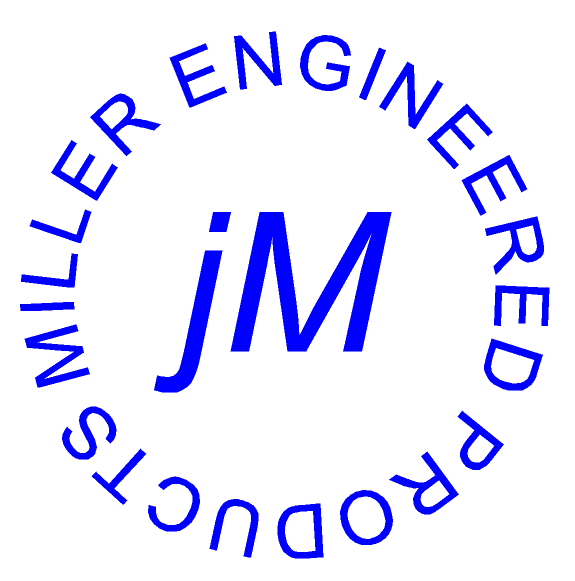FOOTPRINTS
BLUE Items
are PDF Downloads
Jim Miller
has been involved in the racing industry for over 35 years. Like many
company founders in America’s racing heritage, Jim’s roots stem from amateur
racing, starting with motorcycles at 15 and cars at 16. At 17, Jim was the
youngest Ford trained line mechanic authorized to do warranty work on all of
Ford’s factory muscle cars, an impressive lineup that included: the BOSS
302, BOSS 351, BOSS 429, 428CJ and the 429SCJ, among others. After a year racing
a
1967 Mustang GT, it was traded for a
new 1970 BOSS 429 Mustang. Within a month
it was disassembled to prep for B/MP, using the best parts from
Holman-Moody, Gapp & Roush, Arias, Crane and other top companies. It
marked the modest beginning of a long love affair with cylinder head and
valve train development that would span from motorcycles to airplanes, and
cover many V6 and V8s in between.
In 1972, after
walking away from the 105 MPH end-over-end crash of his
first BOSS 429, a
second BOSS was bought a month later, which Jim took to the next level. Two summers of racing the first BOSS had proven
to him that implementing cams and induction similar to the Chrysler Hemi,
with radical port size and high lift, were the secret to this engine's
awesome port flow capabilities. This was opposite the reduced port thinking of
Jack Roush and other leading BOSS Pro Stock racers. RPMs were pushed to 8,700...and
the small steel OEM intake rocker was lifting beyond its arcing range. Roller rocker arms became
a primary development for the engine of the second BOSS Mustang.
At the time, the
only aluminum rockers available were made for Jack Roush by Loc Performance,
which Jim deemed were too heavy for the most complex rocker
geometry of any American OHV engine. After a complete study of nearly all of
America’s most popular engines Jim designed his own, and addressed the questions other companies considered
unimportant. By 1973 the
formulas Jim developed to optimize radial motion became: MID-LIFT geometry.
In 1980,
with a Patent Pending, and 5 years experience on his own engines through two
generations of rocker designs for the BOSS 429 (Series
II), Jim finally published a full
page ad in a February issue of National Dragster, announcing the
principles of MID-LIFT geometry to the racing industry and attracting the
attention of many noteworthy companies, including TRW’s high performance
valve division, who considered Jim’s observations critical to solving their
ongoing plague of valve tip losses in NASCAR.
In 1982,
Jim received the only US Patent ever issued for a “concept” of precision
rocker arm geometry. The
“MID-LIFT”
Patent
(4,365,785) spelled out the
maximum efficiency of perpendicular geometry.
In 1983,
Jim had refined rocker arm “beam” design and side thrust loadings to what
became the
Series III BOSS 429 rocker arms.
Early customers included World Champion Bob Glidden and
Funny Car World record holders, the Jordon Brothers. These were the first to use Torrington needle Thrust
bearings; "drip down" oiling;
and first revealed in June, 1985
Pulling Power Magazine article called
Fomoco Frenzy.
By 1987, Jim accepted
a position at Lunati Cams, in Memphis, TN, on the pretense of new product
development and marketing, when in fact it it was for much more, as
explained in
The Lunati Factor.
In 1989,
three noted valve-train articles were published simultaneously in the June issue of Popular Hot Rodding Magazine:
Setting Valve Lash, Cam
Company Shopping Guide, and
Cam Basics, respectively.
In
October, 1992, Car Craft magazine published Chevrolet’s Race Shop
illustrations specifically recommending MID-LIFT as the preferred method of
rocker arm geometry; the first OEM to publicly endorse.
In
July, 1993, Miller Engineering Inc (MEI) was
founded, solely to address making professional level rocker arms with
MID-LIFT geometry.
In
November, 1994, Jim published the advanced
geometry principles of rocker arm design in a Super
Ford Magazine article, called
Rockin' Geometry.
In
January, 1996, Precision Valve Systems (PVS) was founded
to use a combination of international sourcing and domestic assembly in bringing a more affordable, precision MID-LIFT rocker arm to the market that
engine builders could sell, making a reasonable profit in doing so. The
PVS product group combined
German imported steel and offshore 7075-T6 aluminum for the final work done at the
MEI
facilities in Florida.
Between
1996 and 2000, Jim was awarded three new U.S. Patents;
5,560,265,
5,596,958
and
6,041,750.
March 8, 2000,
a highly confidential mandate from Chrysler’s racing engineers on valve
train design parameters was issued to their seven teams, led by Ray Everham, which stipulated
that rocker arms for ALL teams debut in NASCAR for the 2000 season would only be MID-LIFT
geometry.
October 2003, the MID-LIFT.com web
site was launched with 90% of its content being technical information for
engine builders, and the PVS
PRO-STAND™ systems were debuted.
In July of 2008, Jim retired from
manufacturing and consolidated the
dissolved MEI and PVS into MPG.
March, 2016,
MID-LIFT Advanced Rocker Arm Tech is published;
available
HERE, as well as Amazon and other major
and specialty outlets.
(1611211630)

MILLER MID-LIFT ™
The Standard By Which All Is Measured!™
954-978-2171
Contact:
Jim Miller
MID-LIFT™, PRO-SHAFT™ & PRO-STUD™ are JM Miller Trademarks; Copyright © MMIII~MMXXIV
| |

